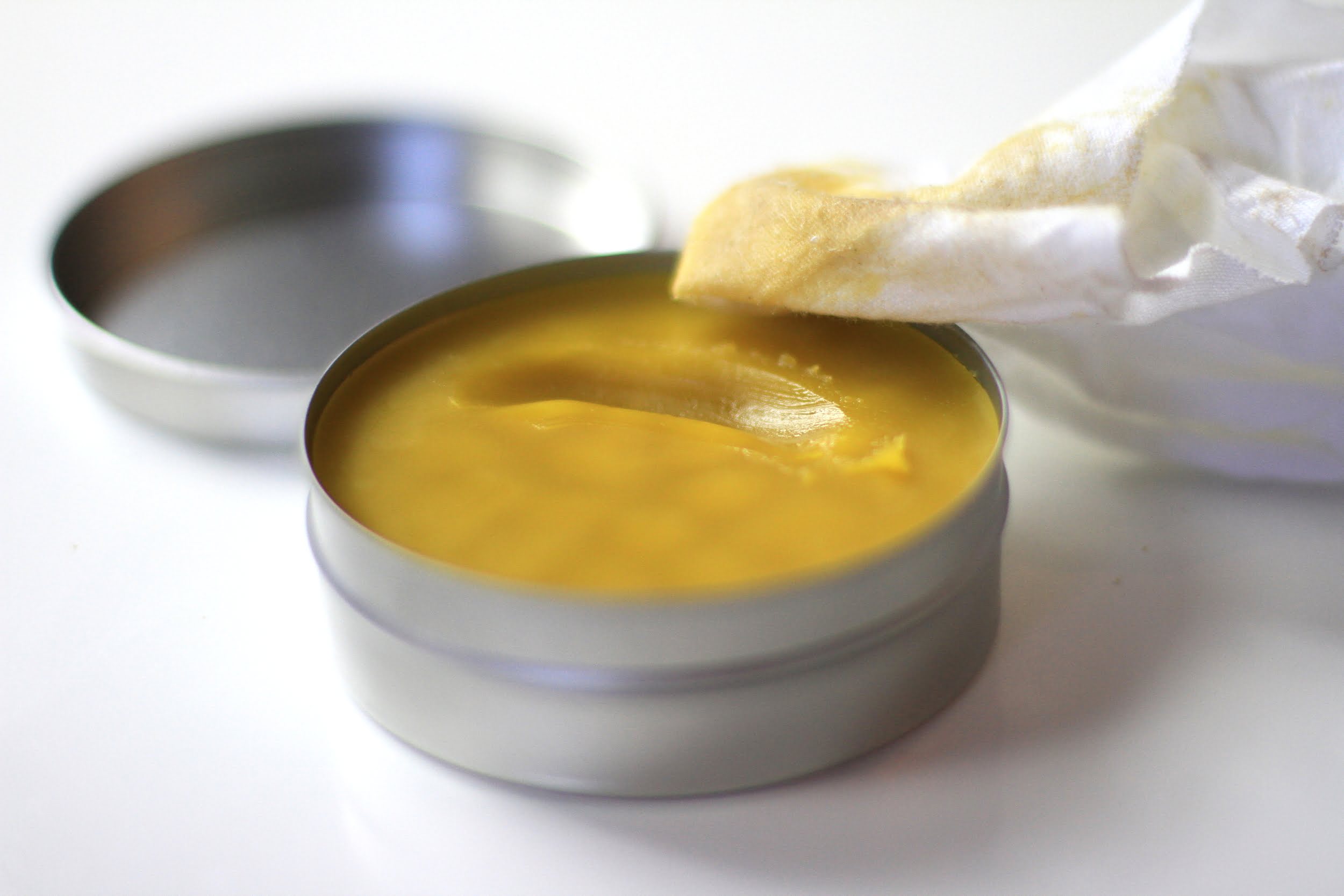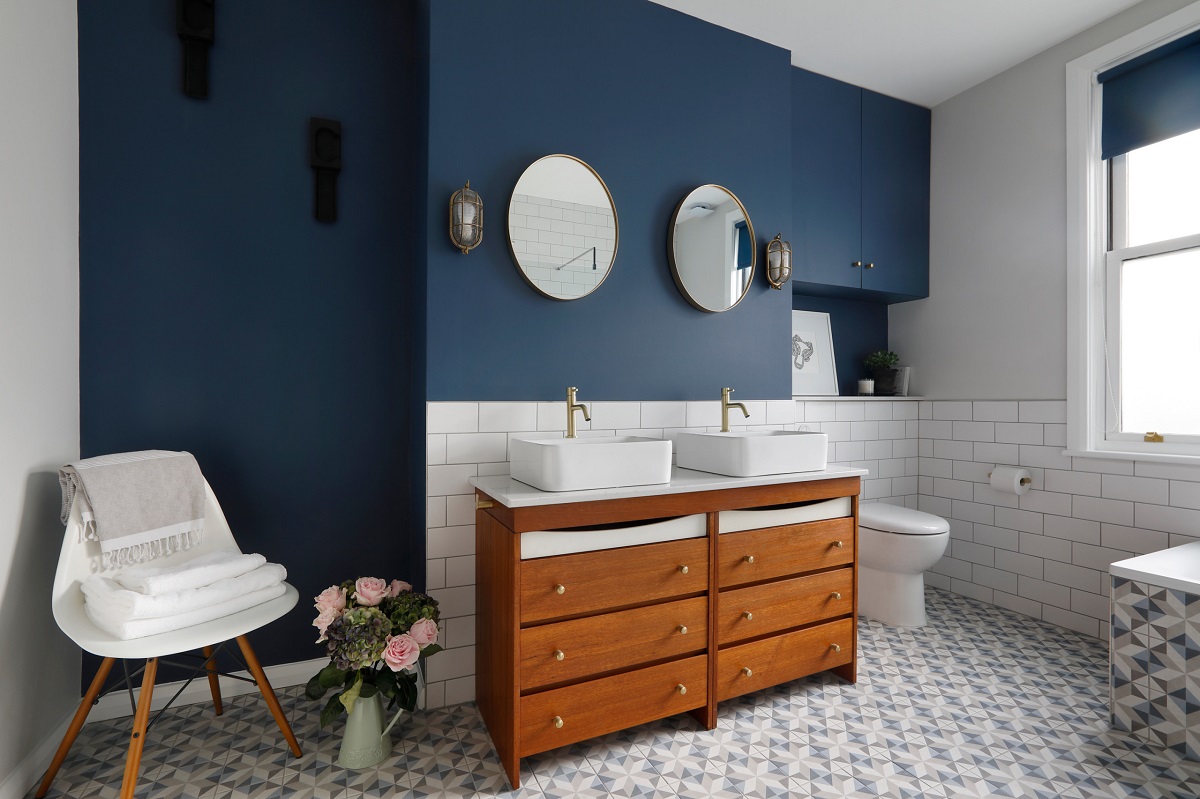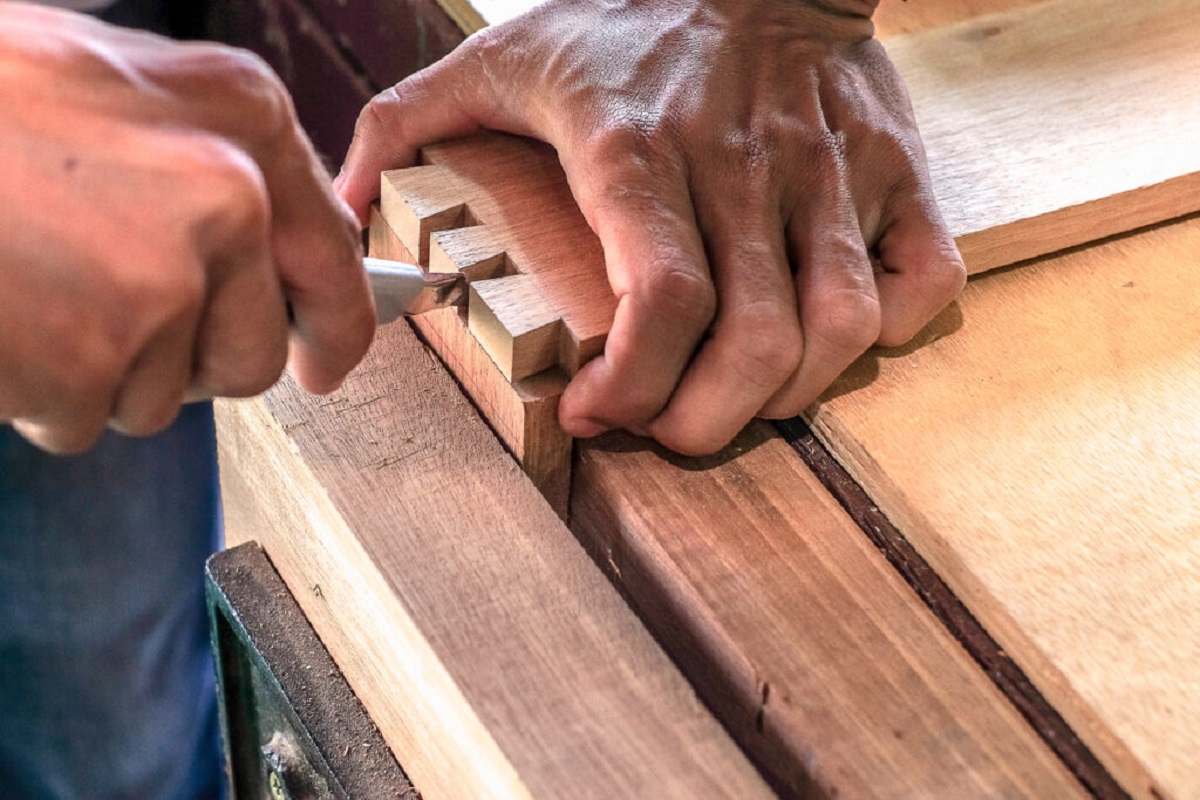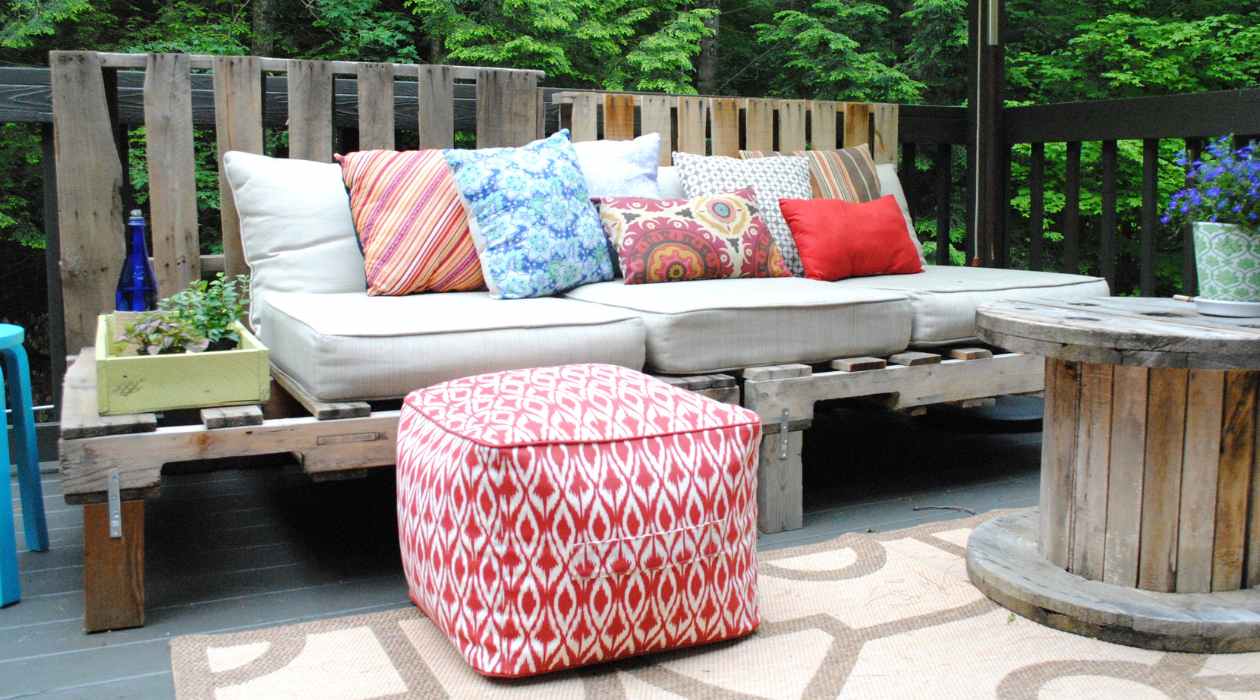

Articles
How To Make Furniture
Modified: February 25, 2024
Discover the step-by-step guide on how to make stunning furniture at home. Get creative and bring your own touch to every piece. Enhance your space with beautiful, handcrafted furniture.
(Many of the links in this article redirect to a specific reviewed product. Your purchase of these products through affiliate links helps to generate commission for Storables.com, at no extra cost. Learn more)
Introduction
Welcome to the exciting world of furniture making! Whether you’re a DIY enthusiast or a professional carpenter, creating your own furniture can be a rewarding and fulfilling experience. Not only does it offer the opportunity to showcase your creativity and craftsmanship, but it also allows you to tailor the design and functionality to your specific needs and preferences.
In this comprehensive guide, we will explore the step-by-step process of making furniture from scratch. From choosing the right materials to assembling and finishing your masterpiece, we’ll cover all the essential aspects to help you create a beautiful and functional piece.
So, if you’re ready to embark on a woodworking adventure, let’s dive in and discover the art of furniture making!
Key Takeaways:
- Crafting furniture involves meticulous planning, precise measurements, and the use of essential tools and materials. From selecting a design to assembling and finishing, each step contributes to creating a beautiful and functional piece.
- Proper maintenance, including regular cleaning and careful handling, ensures the longevity and durability of handmade furniture. Embracing the satisfaction of creating something unique inspires further exploration in the art of furniture making.
Read more: How To Make Dollhouse Furniture
Materials Needed
Before diving into the world of furniture making, it’s important to gather all the necessary materials. Here are the key supplies you’ll need:
- Wood: The main component of any furniture project is, of course, wood. Choose a type of wood that suits your desired look and durability. Popular options include oak, pine, maple, and plywood.
- Screws: Screws are essential for securing various parts of the furniture together. Make sure to choose the appropriate size and type of screws based on the thickness and type of wood you’re using.
- Nails: Nails are another fastening option, particularly for lighter and less structurally demanding furniture. They come in different lengths and gauges, so select the ones that best match your project requirements.
- Sandpaper: To achieve a smooth and polished finish, sandpaper is essential. Different grits of sandpaper are used for different stages of sanding, from coarse to fine, to achieve the desired level of smoothness.
- Wood glue: Wood glue is the bonding agent that ensures the pieces of wood stick together securely. Look for a high-quality wood glue that dries clear and is suitable for your specific woodworking project.
- Varnish or paint: To protect and enhance the appearance of your furniture, you’ll need varnish or paint. Varnish creates a natural and glossy finish, while paint offers a variety of colors and finishes to suit your style.
Make sure to gather all these materials before starting your project. Having everything readily available will save you time and allow you to focus on the craftsmanship and creativity involved in furniture making.
Tools Required
To successfully bring your furniture project to life, you’ll need a collection of essential tools. Here are the key tools you’ll need:
- Saw: A reliable saw is essential for cutting wood into the desired shapes and sizes. Circular saws and hand saws are popular choices for furniture making.
- Drill: A drill is an indispensable tool for creating holes and driving screws into the wood. It’s essential to have a drill with a variety of drill bits suitable for different hole sizes.
- Hammer: A good quality hammer is necessary for nailing pieces of wood together. Choose a hammer with a comfortable grip and a weight that suits your strength and preferences.
- Tape measure: Accurate measurements are crucial in furniture making. A tape measure helps you ensure precise dimensions and allows you to cut your wood with precision.
- Screwdriver: To tighten and loosen screws, you’ll need a set of screwdrivers. Invest in both flathead and Phillips screwdrivers of various sizes to accommodate different screw types.
- Clamps: Clamps are valuable tools for holding pieces of wood together while the glue dries or when fastening them with screws. They provide stability and ensure precise alignment.
These tools form the foundation of your furniture-making arsenal. Having these tools on hand will enable you to work efficiently and accurately, bringing your furniture designs to fruition.
Choosing a Furniture Design
One of the most exciting aspects of furniture making is selecting a design that reflects your personal style and meets your functional needs. When choosing a furniture design, consider the following factors:
Functionality:
Think about the purpose your furniture will serve. Will it be a decorative piece, a storage solution, or a functional item? Consider how the design can optimize the usability and practicality of the furniture.
Read more: How To Make Porch Furniture
Aesthetics:
Consider the overall look and feel you want to achieve. Do you prefer a modern, minimalist design, or a more traditional and ornate style? Take inspiration from various sources such as magazines, online platforms, and furniture exhibitions to discover different design aesthetics.
Materials:
Look for designs that match the type of wood you plan to work with. Some designs may be more suitable for hardwood, while others can be adapted for softer woods. Consider the grain pattern, color, and texture of the wood when selecting a design.
Skill Level:
Assess your woodworking skills and experience when choosing a design. If you’re a beginner, start with simpler designs that involve basic joinery techniques. As you gain more expertise, you can take on more complex and intricate designs.
Space and Scale:
Consider the dimensions of the space where the furniture will be placed. Ensure that the design is proportionate to the available room and allows for easy movement and functionality.
Read more: How To Make Furniture With Pallets
Budget:
Keep in mind the cost implications of the design you choose. Some designs may require more expensive materials or additional tools. Plan your budget accordingly to ensure that you can execute your chosen design without financial obstacles.
By taking these factors into account, you can narrow down your options and select a furniture design that aligns with your vision and preferences. Remember, the design should not only be visually appealing but also functional and suited to your woodworking skills.
Planning Your Project
Before you start cutting and assembling your furniture, it’s crucial to plan your project thoroughly. This planning phase ensures that you have a clear vision of your design and allows for accurate execution. Here are two key aspects of planning your project:
Sketching your design:
Begin by sketching your furniture design on paper or using design software. This step allows you to visualize the final product and make any necessary adjustments before starting the construction process. Pay attention to details such as dimensions, joinery, and overall aesthetics. Sketching your design also helps you create a materials and tools list.
Measurements and dimensions:
Precision is vital in furniture making, and accurate measurements and dimensions are essential for creating a well-crafted piece of furniture. Use a tape measure to measure the area where the furniture will be placed, ensuring that it fits perfectly without impeding movement or function. Take accurate measurements of all components of the furniture, including length, width, and height. Keep in mind any specific requirements or desired proportions that were determined during the sketching phase.
Transferring your measurements and dimensions from the sketch to the actual wood is crucial. Use a pencil and a square to mark the wood accurately before cutting or joining the pieces. Double-check your measurements to avoid any errors that could lead to misalignment or ill-fitting parts.
By thoroughly planning your project, you’ll have a clear roadmap to follow during the construction process. Planning ensures that your design is well-defined and that you have all the necessary measurements and dimensions to bring your furniture to life.
Read more: How To Make Outdoor Furniture
Procuring the Materials
Once you have finalized your design and taken accurate measurements, it’s time to gather the necessary materials for your furniture project. Here are some steps to follow when procuring the materials:
Make a materials list:
Refer back to your design and measurements to create a comprehensive materials list. Include the type and quantity of wood, screws, nails, sandpaper grits, wood glue, varnish or paint, and any other materials specific to your project. This list will serve as a guide when purchasing your materials.
Choose a reliable supplier:
Research local suppliers or online stores that specialize in woodworking materials. Look for suppliers with a good reputation, quality products, and competitive prices. Read reviews and seek recommendations from other woodworkers to ensure you’re getting the best materials for your project.
Check material specifications:
When procuring your materials, pay attention to the specifications. Ensure that the wood is of the desired type, grade, and thickness. Double-check the sizes and lengths of screws and nails to match the thickness of the wood. Verify the grits of sandpaper for the different stages of sanding. Examine the properties of the wood glue, varnish, or paint to ensure they are suitable for your specific project.
Read more: How To Learn Furniture Making
Consider sustainability:
If possible, choose materials that are sustainably sourced. Look for wood that is certified by organizations like the Forest Stewardship Council (FSC), indicating that it comes from responsibly managed forests. Opting for eco-friendly and sustainable materials helps preserve natural resources and reduces the environmental impact of your project.
Purchase extra materials:
It’s always a good idea to buy slightly more materials than what is required for your project. This allows for any mistakes or adjustments that may arise during the construction process. Having a few extra pieces of wood, screws, or nails ensures that you can complete your project without any delays or compromises on quality.
By carefully procuring the materials needed for your project, you’re setting yourself up for success. Having the right materials on hand will make the construction process smoother and more efficient, allowing you to focus on the craftsmanship and creativity involved in furniture making.
Preparing the Wood
Preparing the wood is a crucial step in any furniture-making project. Properly cutting the wood to size and sanding the surfaces are essential for achieving a polished and professional-looking final product. Let’s explore these two important steps in detail:
Cutting the wood to size:
Using the measurements and dimensions from your design, carefully mark the wood pieces with a pencil or marking tool. Double-check the measurements to ensure accuracy and precision. Once marked, use a saw appropriate for the type and thickness of the wood to make the cuts.
Take your time and cut along the marked lines, ensuring straight and clean cuts. If needed, employ clamps or guides to help maintain accuracy. Remember to wear appropriate safety equipment, such as safety goggles and work gloves, to protect yourself during the cutting process.
Read more: How To Make Outdoor Furniture Covers
Sanding the surfaces:
After cutting the wood to size, it’s time to sand the surfaces for a smooth and even finish. Start with a coarse-grit sandpaper (around 80-100 grit) to remove any rough edges, splinters, or imperfections. Sand in the direction of the wood grain using long, even strokes.
As you progress, move to finer-grit sandpaper (around 120-220 grit) to achieve a smoother surface. Sanding with a finer grit removes any remaining roughness and prepares the wood for finishing. Be thorough in your sanding, paying attention to all sides and edges of the wood pieces.
While hand sanding is an option, consider using a power sander for larger projects or to save time. A belt sander or orbital sander can speed up the sanding process and ensure even and consistent results. However, exercise caution and follow safety guidelines when using power tools.
Once you’ve completed the sanding process, run your hands over the wood surfaces to ensure they feel smooth. If necessary, touch up any areas that require further sanding to achieve the desired level of smoothness.
Properly preparing the wood by cutting it to size and sanding the surfaces sets the stage for successful furniture construction. Taking the time to complete these steps with attention to detail will result in a high-quality finished product that is ready for assembly and finishing.
Assembling the Furniture
Now that you have prepared the wood, it’s time to bring your furniture to life through the process of assembly. This involves attaching the various pieces together to create a sturdy and functional structure. Let’s explore three common methods of assembling furniture: using screws and nails, and using wood glue.
Attaching pieces together:
Start by organizing your cut wood pieces according to your design. Align the pieces based on your measurements and layout, ensuring proper fit and alignment. This step is crucial for the overall stability and structural integrity of your furniture.
Using screws and nails:
Screws and nails are commonly used to fasten wooden pieces together. Pre-drill holes slightly smaller than the diameter of the screws or nails to prevent splitting the wood. Then, use a screwdriver or a hammer to drive the screws or nails into the pre-drilled holes. Be careful not to overtighten the screws, as this can cause the wood to crack or become weakened.
If possible, use screws or nails in conjunction with wood glue for added strength. This combination creates a strong bond between the pieces and reinforces the joints.
When using nails, it’s advisable to use a nail punch to countersink the nails slightly below the wood surface. This allows for a more seamless and professional appearance that can be easily covered with wood filler or putty.
Read more: How To Make Cushions For Patio Furniture
Using wood glue:
Wood glue is an excellent adhesive for joining wooden components. Apply a thin layer of wood glue to the mating surfaces of the wood pieces that need to be joined. Press the pieces together firmly and secure them with clamps or weights to maintain pressure while the glue dries.
Follow the instructions on the wood glue packaging regarding drying time and clamping requirements. It’s important to allow sufficient drying time to ensure a strong and durable bond. After the glue has dried, remove any excess glue using a chisel or sandpaper.
Remember to use clamps while assembling to ensure proper alignment and to keep the pieces in place until the glue or fasteners have securely joined them. Clamps can be particularly useful when working with larger or more complex furniture designs.
By using screws, nails, and wood glue, you can confidently assemble your furniture, creating a solid and reliable construction. Take your time, double-check measurements, and ensure proper alignment to achieve a professional and sturdy finished piece.
Finishing Touches
After the main construction and assembly of your furniture, it’s time to give it those final touches that will truly bring out its beauty and make it shine. Here are three important finishing touches to consider: sanding the furniture, applying varnish or paint, and adding decorative elements.
Sanding the furniture:
Once the furniture is assembled, give it a final sanding to ensure a smooth and polished surface. Start with a medium-grit sandpaper (around 150-180 grit) and then progress to a finer-grit sandpaper (around 220-240 grit) for a silky finish. Sand in the direction of the wood grain, removing any remaining imperfections and creating a uniform surface.
Pay close attention to the corners, edges, and curved areas. These areas may require extra care and hand sanding to achieve a consistent and smooth finish. Remember to sand lightly and evenly to avoid over-sanding or creating uneven surfaces.
Applying varnish or paint:
Choose between applying a varnish or paint, depending on the desired finish and look you want to achieve for your furniture. Varnish provides a natural and protective finish that enhances the wood’s natural beauty. Paint, on the other hand, offers a wide range of color options to match your style and décor.
Before applying varnish or paint, make sure the surface is clean and free of dust. Apply thin and even coats using a brush, roller, or spray gun, following the manufacturer’s instructions. Allow each coat to dry completely before applying the next. Multiple thin coats are preferable to one thick coat, as they provide a smoother and more professional finish.
If applying paint, consider using a primer as a base coat to enhance adhesion and to provide a more even color. Take your time and apply each coat evenly, ensuring full coverage. Consider adding a clear protective coat on top of the paint to increase durability and longevity.
Read more: How To Make Concrete Patio Furniture
Adding decorative elements:
To further enhance the aesthetics of your furniture, consider adding decorative elements. This can include embellishments such as wood carvings, metal accents, or decorative hardware. These elements can be attached using screws, nails, or wood glue.
Be thoughtful and selective when adding decorative elements, ensuring they align with your overall design and enhance the appearance of your furniture. Take care not to overdo it, as too many decorative elements can overwhelm the piece and detract from its elegance.
Remember to step back and evaluate the overall look of the finished product from various angles. Make any necessary adjustments or touch-ups to ensure a flawless and visually appealing result.
By sanding the furniture, applying varnish or paint, and adding decorative elements, you can elevate your furniture to a whole new level of style and sophistication. These finishing touches not only enhance the appearance but also provide protection and durability, making your furniture ready to be showcased and enjoyed for years to come.
Final Steps
As your furniture nears completion, there are a few final steps to take to ensure its stability, durability, and longevity. Let’s explore these final steps: checking for stability and durability and cleaning and maintenance tips.
Checking for stability and durability:
Before considering your furniture project complete, it’s important to perform a thorough check for stability and durability. Ensure that all joints are secure and tight, screws and nails are properly fastened, and the overall structure is stable. Give the furniture a gentle shake or wiggle to test its stability. If any parts feel loose or unstable, reinforce them by applying additional screws, nails, or wood glue as necessary.
Check for any signs of weakness, particularly in areas that may experience more stress or weight-bearing. If any parts exhibit signs of weakness, reinforce them with additional supports or braces. Ensure that the furniture can withstand normal use and provide a safe and reliable functionality.
Cleaning and maintenance tips:
To keep your newly crafted furniture in top condition, follow these cleaning and maintenance tips:
- Dust regularly: Use a soft cloth or a feather duster to remove dust and debris from the surface of your furniture. Regular dusting helps maintain the appearance and prevents the buildup of dirt.
- Avoid harsh cleaners: When cleaning your furniture, avoid harsh chemicals or abrasive cleaners that can damage the finish or wood. Instead, use mild soap and water, ensuring that the cloth or sponge is damp rather than soaking wet. Dry the furniture immediately after cleaning to prevent moisture damage.
- Protect from moisture and sun: Keep your furniture away from direct sunlight and excessive moisture, as these can cause fading, warping, or damage to the wood. Use curtains or blinds to protect from prolonged exposure to sunlight. If placing the furniture outdoors, consider applying a weather-resistant finish or using furniture covers.
- Avoid extreme temperatures: Avoid placing your furniture near heat sources or in areas with extreme temperature fluctuations, as this can lead to wood expansion or contraction, causing damage over time.
- Repair as needed: Regularly inspect your furniture for any signs of wear, loose parts, or damage. Repair or replace any components as necessary to maintain its structural integrity and appearance.
By regularly cleaning and properly maintaining your furniture, you can ensure its longevity and extend its lifespan. Taking care of your furniture will preserve its beauty and functionality for generations to come.
With these final steps completed, you can now take pride in your finished furniture project. Admire your craftsmanship and enjoy the beauty and functionality of your handmade piece. Whether it’s a functional item or a decorative statement, your furniture is a testament to your creativity and skill in the world of woodworking.
Read more: How To Make Money Flipping Furniture
Conclusion
Congratulations! You have successfully embarked on a journey into the world of furniture making. Through proper planning, meticulous execution, and attention to detail, you have transformed raw materials into a beautiful and functional piece of furniture. Whether it’s a simple table, a stylish chair, or an elaborate bookshelf, your creation stands as a testament to your craftsmanship and dedication.
Throughout this comprehensive guide, we have covered the essential steps of furniture making. From choosing a design and procuring materials to preparing the wood, assembling the furniture, and adding the finishing touches, each stage has contributed to the final result.
By selecting the right materials, using the necessary tools, and incorporating your creativity, you have created a piece of furniture that is not only visually appealing but also structurally sound and durable. The sturdy joints, smooth surfaces, and meticulous assembly techniques ensure that your furniture will withstand the test of time.
Remember to keep your furniture properly maintained through regular cleaning and careful handling. By following our cleaning and maintenance tips, you can keep your furniture looking its best and preserve its quality for years to come.
Whether you embarked on this furniture-making journey for personal enjoyment, to save money, or as a professional pursuit, the skills and knowledge you have gained along the way are invaluable. Embrace the satisfaction and pride that come with creating something with your own hands, and let it inspire you to take on even more ambitious projects in the future.
Thank you for joining us on this furniture-making adventure. We hope that this guide has provided you with the guidance and inspiration you need to bring your creative vision to life. Remember, the possibilities in furniture making are endless, and with each project, you’ll continue to refine your skills and develop your own unique style.
Now, go forth and continue to explore the art of furniture making. Let your imagination soar and your creations speak for themselves. Happy woodworking!
Frequently Asked Questions about How To Make Furniture
Was this page helpful?
At Storables.com, we guarantee accurate and reliable information. Our content, validated by Expert Board Contributors, is crafted following stringent Editorial Policies. We're committed to providing you with well-researched, expert-backed insights for all your informational needs.








0 thoughts on “How To Make Furniture”